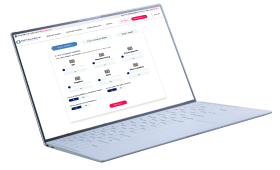
Understand your company's position and learn more about the options available
Require Immediate Support? Free Director Helpline: 0800 644 6080
Free Director Helpline: 0800 644 6080
Updated:
As of 1st December 2020, HMRC is a secondary preferential creditor in formal insolvency proceedings. Previously, they ranked as unsecured creditors and therefore stood at the bottom of the hierarchy for repayment.
Creditors are repaid in a designated order laid down in insolvency law, and this promotion of HMRC up to secondary preferential creditor for certain tax debts, has serious consequences for some creditor groups. Unsecured creditors already stood to receive very little return from an insolvent liquidation, and HMRC's elevation to secondary preferential status has lessened the likelihood of unsecured creditors receiving a dividend even further.
So, what exactly does HMRC secondary preferential creditor status mean for other creditors, and why has HMRC’s position changed in this way?
Free 60 Second Test
For Ltd Company Directors
What are you looking to do?
Choose below:
Unlike suppliers and other types of creditor, HMRC are unable to choose who they conduct business with. In this way they are involuntary creditors.
HMRC is also the largest creditor in many formal insolvent liquidation processes, with most insolvent companies owing at least some money to HMRC. This means HMRC are exposed to high losses in the form of tax arrears. These may have remained unpaid for months or even years, as these types of preferential tax debts aren’t time-barred.
So, what has happened to change their position in the creditor hierarchy?
“Spoke with Chris who put me at ease straight away. He was very knowledgeable and listened intently to all my worries and concerns. Will definitely be using Real Business Rescue and advise anyone with business issues to give them a call.”
Diana
HMRC used to be a preferential creditor, but this status was removed when the Enterprise Act 2002 came into force on 15 September 2003. As a result of that change, monies that would have previously been recouped by HMRC were instead repaid to other creditors of the liquidation.
In an effort to boost the public purse, HMRC's status as preferential creditor has been partially restored, however, they do still sit behind employees’ preferential claims and their secondary preferential status only relates to certain taxes.
This includes:
For corporation tax debts, HMRC would rank as an unsecured creditor for the amount owed.
Dealing with HMRC debts?
If you are experiencing pressure from HMRC for unpaid tax liabilities, you are far from alone. In fact HMRC is the most common creditor of businesses in the UK. For expert help and advice in tackling your tax debt, call our team.
The team are available now - 0800 644 6080
Get a Quote Find Your Nearest Office
Creditors are grouped into categories, and the following is a broad outline of the order of repayment:
The appointed office-holder must repay each creditor group in full before moving on to the next.
Lower returns
Secured creditors with a floating charge, and unsecured creditors, are at risk of receiving lower returns from a liquidation process due to the new HMRC creditor status. As we mentioned earlier, unsecured creditors in particular, typically receive very little in the way of return from insolvent liquidation and this move by HMRC exacerbates their position.
Reluctance to lend
Lenders holding a floating charge over a company’s asset class, such as stock, may be unwilling to lend to businesses due to the diminishing value of their security. If there’s a general reluctance to lend following HMRC’s creditor status, it could create further financial distress for companies with poor cash flow, and hamper business growth as a whole.
If your company is struggling with unmanageable debts, squeezed cash flow, or an uncertain future, you are far from alone. We speak to company directors just like you every single day, and we are here to give you the help and advice you need.
Call our team today on 0800 644 6080
More personal guarantees
To mitigate their risk of lending, personal guarantees could be demanded more often by lenders who would be placed further down the hierarchy. This inflicts additional pressure on companies and directors at a time when access to funding is crucial.
Potential rise in insolvencies and job losses
More restrictions on business lending and demands for personal guarantees could create further insolvencies and job losses as businesses struggle to secure vital funding. Business creditors in the supply chain are also likely to feel the effects of their trading partner’s insolvency, introducing a risk of financial decline in other businesses.
If you would like to find out more about HMRC creditor status and what it means for your business, please contact one of the team at Real Business Rescue. We’re insolvency specialists with a network of offices around the country, and can offer you a free same-day consultation.
Still unsure whether liquidation is right for your company? Don't worry, the experts at Real Business Rescue are here to help. Our licensed insolvency practitioners will take the time to understand the problems your company is facing before recommending the best course of action going forward based on your own unique circumstances.

Complete the below to get in touch
For Ltd Company Directors
What are you looking to do?
Choose below:
We provide free confidential advice with absolutely no obligation.
Our expert and non-judgemental team are ready to assist directors and stakeholders today.

Understand your company's position and learn more about the options available

Find your nearest office - we have more than 100 across the UK. Remote Video Meetings are also available.

Free, confidential, and trusted advice for company directors across the UK.